Far away from the home base Bangalore, having been squatting in the lap of the Himalayas in Rishikesh for weeks now and with the mercury soaring, I decided to do what everyone else in the region in this weather does. Head off to the mountains, get a breather, and perhaps explore living there long term. So I decided to explore the famous Kasol region.
I chose to consciously go on weekday and return before the weekend-ish hoping from a respite from the onslaught of weekend tourists.
But here’s the thing, no matter how mainstream, how popular these places and how crowded the roads leading up to the mountains get, they’re always going to be a source of succour, fresh air, new perspectives, and of course showing you your place in the world.
But without veering away too much from the point of this blogpost, (I could ramble on) I intend to write this as a helpful guide to plan your own short (or long) trip to the famous Himachal Pradesh region with a 5-day itinerary across Manali, Kasol and Kheer Ganga.
Just to set some context, Himachal (unofficially) is defined by its valleys – There are valleys like Solang Valley, Kangra Valley, Parvati Valley, Sainj Valley, and so on. My trip was focussed largely on the Parvati Valley and I spent roughly 5 days in the region and this was roughly my (unplanned) trip itinerary.
Day 0: Getting from Dehradun/Rishikesh/Haridwar to Manali
Note while there’s many buses from Delhi to Manali, there’s only one bus (Cityland travels) that goes from Haridwar/Rishikesh all the way to Manali. This bus too originates in Delhi, but takes the Haridwar -Chandigarh route to get you to Manali in about 14 hours, stopping in Mandi and Kullu enroute. While we originally planned to stop at Bhuntar and take another bus to Kasol skipping Manali altogether, the bus didn’t stop at Bhuntar and we ended up going all the way to Manali. (if you plan to stop at Bhuntar, let your bus conductor know well in advance!)
Day 1 – Spending the day in Old Manali
Reaching Manali around 11am, we decided to skip living in Manali altogether and straight up took an autorikshaw to old Manali – a 15 min ride up narrow ascending lanes past Manu Temple. We stayed at a charming hostel/hotel called Monkbase at the far end of Old Manali and hence usually available and reasonably priced. The views from most rooms and the common lounge area are stunning, even if it feels like it’s the last bit of civilisation.
What to do in Manali?
Well that depends on the purpose of your trip and your interests. The region is gaining popularity as a digital nomad hub for a workation thanks to the decent network coverage. (But not as much as Dharamkot, the other Himachal favourite and where I spent months a year later.) I didn’t have an agenda for the trip, so I mostly lounged, soaked in the nature around, and picked up a book lying in the hostel library – “Lost in the valley of death” – a book that would define and heighten the rest of my trip, but more on that later. I spent hours in the common area of the hostel, just lost in my book, sipping tea and that was fine, given the views and the vibe in the hotel itself.

Noons, I went for a small hike around Old Manali area, checking out the multitude of cafes, bars and shops flanking both sides of the narrow lane. After a 10 minute walk down towards Manali, you pass a bridge on the river Beas on either side, making for a stunning visual, especially if yaks happen to be crossing with their pahaadi shepherds! Little after the bridge on your left is a forest full of tall Devdar (cedar) trees and spending some time here can be blissful. You can also walk through the forest for 15-20 mins, instead of taking the main road, and exit into Manali, opposite the famous Johnson’s cafe, close to the mall road.
Eating in Manali
There’s many cafes and bars in Old Manali all with a similar vibe but different decor, view and menu. Personally for me, the riverside cafes like Backyard Cafe, Kathmandu Cafe and Cafe Melange had amazing views with the river streams gushing right by your side. Old Manali is also famous for its trout fish which I can’t comment on being vegan, but unlike Rishikesh and its many legendary cafes which are completely alcohol-free and vegetarian (heaven!), Manali has everything for everyone. If you are in the market to try a local delicacy, there’s Siddu, which is essentially a momo-like dumpling but bigger and filled with a chutney of walnuts, peanuts amongst others and topped with ghee.
I’m not sure what there is to do in proper Manali as I spent barely any time there, but if shopping – window or otherwise is your thing, then the Mall road on Manali is lined with hundreds of shops selling everything from shawls to woollen clothes to toys. There’s also some nice cafes and eateries here as is the HRTC bus stand so at some point you’ll have to spend some time around the famous Mall Road of Manali.
Day 2: Chilling in Old Manali
We spent a lot of time chilling again at Monkbase and then walked up to another cafe and enjoy a breakfast by the river streams. Since I knew I had the Kheer Ganga trek lined up ahead, I decided to skip on the shopping but there’s a lot of interesting things to pick up in Old Manali – all kinds of cute printed and handmade bags for ‘stuff’, macrame home decor, woollen hippie pants, leather goods to name a few.
Manali to Kasol
We took a local HRTC bus from Manali to Bhuntar at around 4pm which reached Bhuntar at 6pm and then another local bus snaking through the Parvati Valley got us to Kasol at around 7:30 pm. (Yes, buses can be excruciatingly slow on the mountains, but better slow than sorry!)
Reaching Kasol post sunset at around 8 in the evening, and not having made a prebooking at a hotel, we started walking to find somewhere to just crash for the night. We passed the bright Kasol market, bypassed the lodges there, and suddenly found ourselves on a pitch dark road up the mountains with the Parvati river roaring right below us on the left. Scary as it was, it also felt surreal as the temperatures dropped to reveal the quintessential hill weather, the mild fragrance of the pine and cedar trees lingered in the air and the river thundered all along. After a 20-min walk up in the Manikaran direction, we crossed a narrow wooden bridge to get to the hotel we’d hurriedly looked up on Booking and intended to stay at. But being there in the dark and without any markers or signs leading up to the hotel and absolute no humans in sight, we trekked around the area a bit and checked into the first hotel we found. It was a no-name, mostly functional-core guesthouse but being Kasol, it had the stoner decor down pat, even if our co-guests in the cafe played bad 90’s Bollywood music and drank their whisky instead of the finest weed mankind grows within 50 kilometers of the place! But the area — called Chojh village, has its own character and being somewhat hard to get to makes it free from the crowds and touristy shops elsewhere.

Day 3: Kheer Ganga Trek
It was the day of the Kheer Ganga trek, the same site Justin Alexander, the protagonist of “Lost In the valley of death’ would start (and end) everything at so I was pretty excited for what lay ahead. (But hopefully making it back, unlike him.)
For the Kheer Ganga Trek, you take a local bus from Kasol to Barshaini, passing Manikaran and Solan on the way that makes for a stunning ride by itself. Once you get off in Barshaini about 45 minutes in, there’s several cafes and shops where you can drop your luggage, get a breakfast and/or buy supplies for the trek. I recommend getting a raincoat, some chocolate bars, an extra pair of socks, and some toilet paper in case you don’t already have them.
The Kheer Ganga Trek: What to keep in mind
From Barshaini, the Kheer Ganga trail is pretty well defined, and even if not, you’ll find other trekkers going the same way so chances of getting lost are slim. Still, if you’re solo, try to stay close with the others. If nothing else, you’ll always have those gorgeous dogs of Kheer Ganga coming along with you, part or the whole way of the trek depending on how accepting you’re of them. The Kheer Ganga Trek takes around 5-6 hours from Barshaini, based on your speed, activity and breaks. There’s a couple of different routes to make it up to the campsite. One is through the Pulga Dam and taking a left after crossing the dam and through the Kalga Village. Another way goes around a mountain pass which we took on the way down the next day. If it’s sunny, take the first route as it’s more shaded and takes less time, even if some sources claim it’s easier to get lost there.
The Kheer Ganga trek is fairly easy or moderate and being a noob trekker, I didn’t find it challenging. The views during most of the treks are stunning but bear in mind, the drops are steep and there’s a hungry river on your left to swallow a body whole! So do be careful, don’t rely on the scree (loose stones) to balance yourself as they can disengage and throw your balance off. Carry a stick if you have to. But mostly importantly, be wearing proper trekking shoes with a bit of grip on the soles and have a light bag on you (ideally not more than 2-3 kilos.)
The Cafes of Kheer Ganga

There’s a slew of cafes (or really small setups with a tarp and basic chairs) at various levels of your trek on the way to Kheer Ganga – I counted 8 – and it’s all sorts of amazing how their owners trek up every day with their goods to set up shop to refresh you on a gruelling trek, even if at a slight premium. Do support them by buying a tea, maggi or a whole meal. (if nothing else, buy Parle G for your guide dogs!) Some of the cafes are literally set up on waterfalls! There’s nothing like having a full plate of set breakfast at 8000 feet with your feet in the cool (read freezing cold) waters of a stream!) for less than 250 rupees!
Kheer Ganga Camp Site
At around 3pm, after a nearly 6 hour trek, we reached the Kheer Ganga campsite and were hit with bittersweet feelings. On one hand, you’re fresh off a post-trek high, having made it up to 10,000 feet, safe and sound, and seeing all the snow clad mountains circled in on you, but on the other, seeing hundreds of camps set up on the valley does take some of the thrill off. All the same, Kheer Ganga may have risen in popularity in the last decade do so, but for a good reason.
RIP Parvati Kund
The campsite is home to an ancient Hindu temple where Goddess Parvati is known to have meditated for 5000~ years. At the base of the temple, there *was* Parvati Kund, a pool filled up with water of a hot spring, which unfortunately has now shut down because of over-tourism. (I’m looking at you Insta reels- makers!) However, the temple still exists and there’s still the hot spring water to soothe your trek-weary bones, albeit from a tap rather than in a pool.
So we sat at the base of this hot spring shower area for an hour or so, treating all the senses and the single degree temperatures while soaking in our bare minimum clothes in steaming hot water! Very few experiences come close to that, especially ones that are virtually free.

Post the shower, we went childlike on the swings at our campsite – each camp has its own set of swings! Feel amazed as you swing virtually into the high mountains seemingly at your arm’s reach! As the temperatures started dropping, we squatted in our campsite cafe and never really left, enjoying anything hot to soothe the freezing fingers and toes! Note there’s no electricity for nearly 20 hours on Kheer Ganga and the camps set up there also have to trek up along with the supplies to run these cafes and the little electricity they have in the evening is fuel-generated — be nice and support them by eating there and tipping generously.
At night, our camp guys set up a much needed bonfire and a few of us who shared the campsite warmed up, sharing our trek stories, until we crashed in the freezing tents, surrounded by the Himalayas and under a starry sky. Couldn’t help but think, someone somewhere was probably sleeping even hundreds or thousands of feet above us on the way to Mantalai lake at that point. (Mantalai Lake is the point where Justin Alexander set out to camp and never came back, in 2016.)
The trash problem in Himachal and especially Kheer Ganga Trek
Much as I want to glorify the trek which is of course great, but I couldn’t help but be upset by the trash situation in the area. The entire trek is replete with trash on the sides — water bottles and chip packets being the main culprits. In fact it even became a joke at some point. Lost? Just “follow the trash”. What will it take for people to stop littering when noone’s looking? Why can’t we hold on to our trash in our bags until we’re able to dispose it responsibility in a facility that can dispose it onwards? Please, to anyone reading, I beg of you – don’t be THAT guy. Own your trash, follow some environment-friendly practices. If you can carry a filled bottle to the peak, you can also bring back an empty one down to the base.
Day 4: Trek down from Kheer Ganga onto Katagla
We left the campsite at around 7:30am to be able to reach Kasol by noon. This time we ended up taking a different trail path around halfway than the one we’d taken going up. This one was more rocky, more steep in parts and has pretty much had no trees so the sun hits you hard. But this route affords even better if slightly intimidating views as you cross a few bridges and see the river up close bubbling and frothing as it emerges from between a gorge and narrows into a much milder form while standing a few feet above it. You also cross the Rudranag temple on this route and a few hours later, the Nakthan village, past some undulating and narrow trails full of glittering zinc and quartz rocks!
We reached Barshani by 2pm after what seemed like a never-ending trek back, but instead of walking all the way back to Barshaini, you can also continue the trek towards Tosh village if you want to. We decided to head to Kasol taking the same bus from Barshaini, stopping at a quaint waterfall cafe on the highway, and about an hour later got off at a bridge that crosses over to Katagla – a place we hadn’t even heard of until few minutes before. But the festival we wanted to attend happened to be in the area so we decided to stay there too. And it turned out to be a great decision. Katagla is a part of Kasol and yet is detached from it. If Kasol’s on the right of Parvati, Katagla is on the other bank and it’s a small village that’s just about coming into its own with new-age river cafes, hostels, and site to many EDM parties or “raves”.
We had to trek up a bit to get to our guesthouse, perhaps aptly named “THC”, away from the rows of hostels and affording decent views of the river ahead. Right next to the Instagram-famous ATS cafe, we spent a lot of time at the Perkup cafe, perched up on the high chairs and just soaking in the views, the Parvati river in the front for a change. Come sundown, the pretty picture changes into dark and slightly sinister and yet ever so stunning as the grey waters of the river, occasionally lit up by laser projections from the cafe, are flanked by black mountains and tall trees. The rest of the night is a blurry but beautiful haze so let’s just go right into the next and the last day in Katagla/Kasol.
The psytrance scene in Katagla, Kasol
Kasol is known for its psytrance parties aided by the wide availability of marijuana or rather hash grown in the region. Touted as one of the best in the world, the Malana region (please don’t try to turn it into a tourist hotspot!) produces the “Malana Cream” a variety of hash, and elsewhere in Kasol too, the herbal drug grows abundantly and is available freely and cheaply. Attracted by this, Kasol’s been home to many international travelers, especially from Israel so much so that it’s nicknamed “Mini Israel” of India. Kasol is home to many parties in season where DJs and artists from around India and the world perform their sets. When we were there, a 3-day performance art and music festival called “Full Of Life”, and another one called “Himalayan Flow” were just about kicking off. The lax local laws, the remote nature of the party sites, plenty of pot, makes Kasol the perfect destination for holding all night long music parties which can stretch well into days. If that’s your scene, then definitely do keep an eye out for flyers and posters around Kasol and attend! Katagla in particular seems to be the hotspot of most of these parties and even local bars and cafes sell “edibles”, and play psytrance music come night.

Day 5: Bye Kasol
We checked out of our hotel right on a weekend when the crowds were descending on the place for the parties lay ahead. After crossing the bridge back and taking a 5-min local bus ride, we got back to the Kasol Market and couldn’t help but go into the Mama Cafe, a casual Israeli-frequented cafe, also one where Justin Alexander’s last photo was clicked. I did a bit of shopping, even though Kasol doesn’t offer anything unique but the usual hippie-junkie cornucopia of harem pants, hemp bags, dream catchers, the works. There are however a lot of bakeries all somehow called “German Bakeries” which for a small place like Kasol offer an interesting and internationally-inspired range of baked goods like Croissants, cheesecakes, chocolate balls, and of course the Israeli Babka. Definitely take one to go as the quality and taste can rival those of the best bakeries back in the metros!
For our last base on the day, we settled ourselves at the river-facing Buddha Palace cafe, had an Israeli Shakshuka meal and set out for the final local bus back to Bhuntar from where we’d take the same bus back to Haridwar as the one we’d come in.
This wasn’t my first time to Himachal. Last time I’d come to Manali was in 2011 as a stopover to the big Ladakh bike trip. However, it’s on this trip I really scratched the surface of the wonders that Himachal holds. Steeped in natural beauty of all possible combinations, sleepy, quiet, charming and yet full of life, colours, at the same time, shrouded in a thin veil of darkness, mystique, and danger. I see now why one can spend weeks and months exploring or just soaking in Himachal and not want to come back.


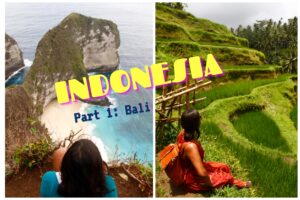
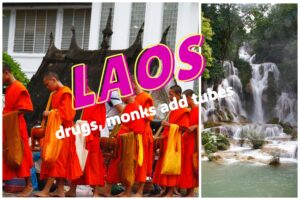
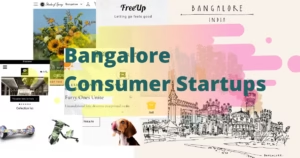
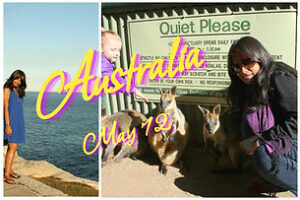
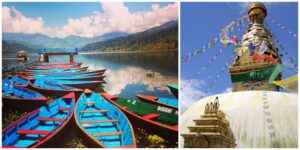
One Thought to “5 Day Itinerary For Manali, Kheer Ganga And Kasol”
[…] it only means one thing: Taking off to the hills and doing a trek. If you’ve done the regular Manali-Kasol trip with the Kheerganga trek, the Triund trek and other one-two day treks, it’s time to take it a […]